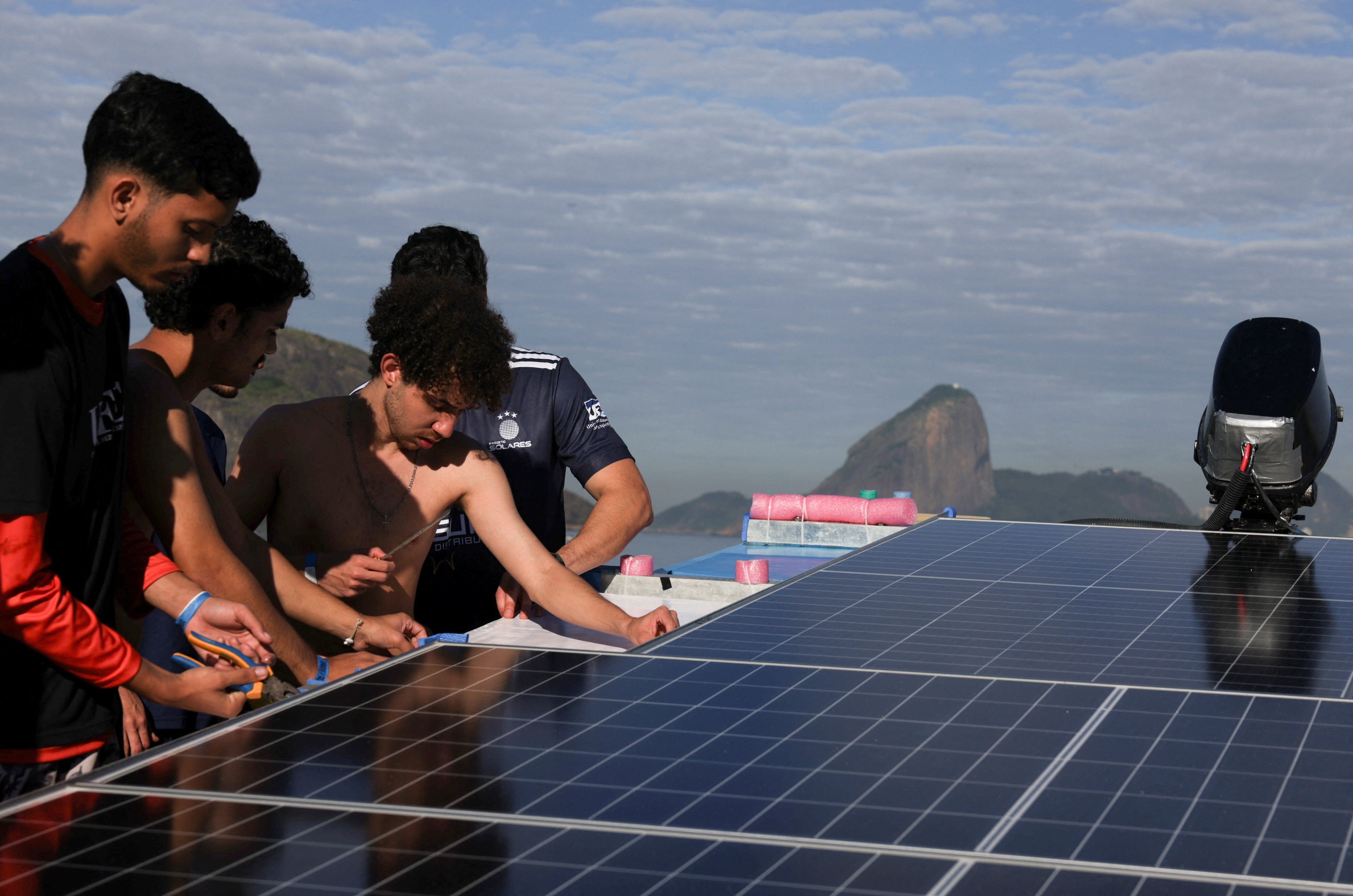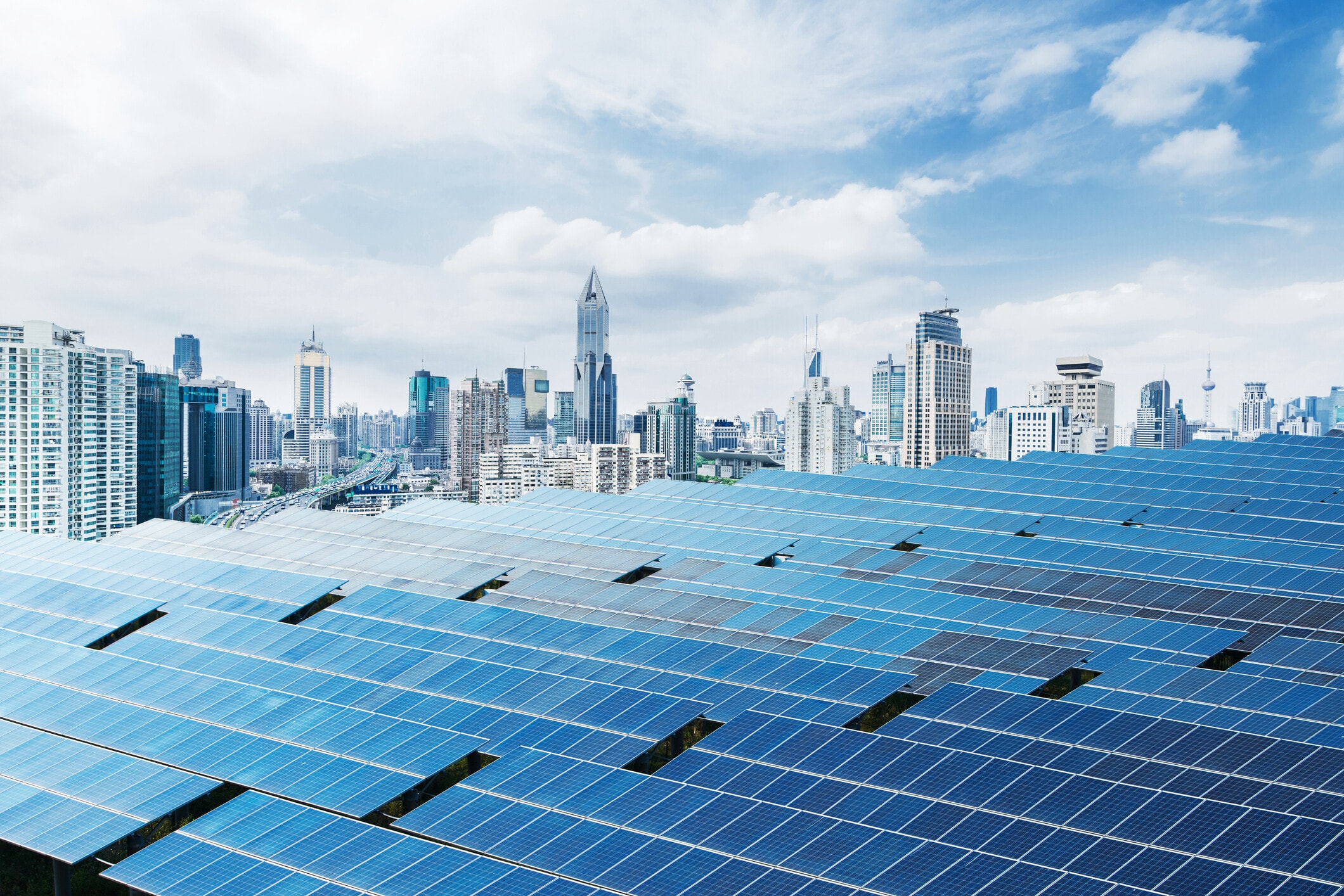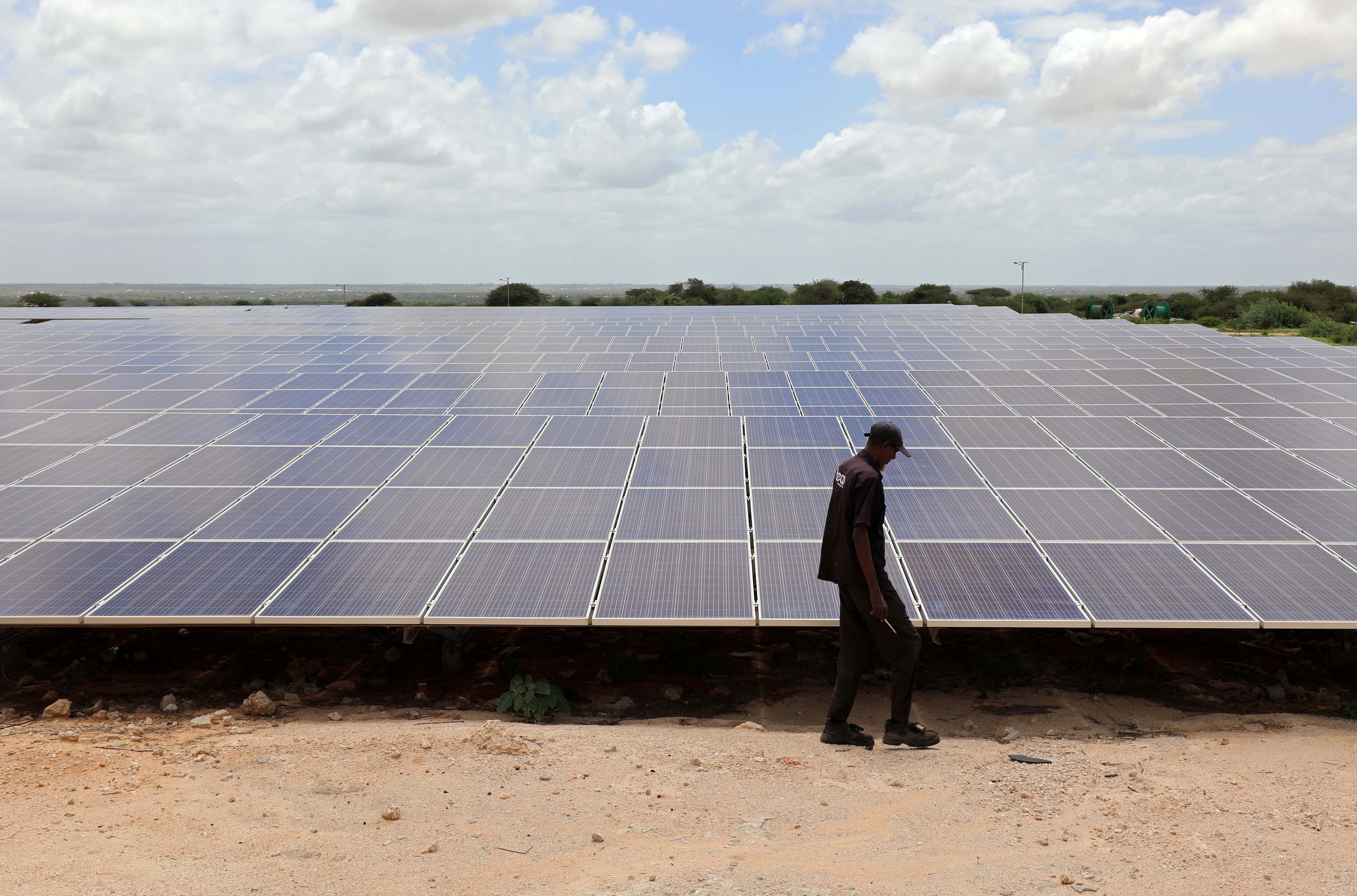How solar pumps can help India’s farmers

Stay up to date:
Future of the Environment
Currently, over 300 million people in India lack access to electricity — almost the size of the entire population of the United States. Increasing energy access has become an economic opportunity, with companies providing off-grid (i.e., solar lanterns or solar home systems) or microgrid solutions (localized, small-scale generation typically serving residential loads). These options help rural customers move away from burning relatively expensive fuels such as kerosene and can provide basic energy services such as lighting and cell-phone charging, but they do not always provide enough electricity to meet economically productive needs. In India, over 50% of the workforce is employed in the agricultural sector so there is an enormous opportunity to link residential electricity needs with agricultural electricity needs, like the electricity needed to power irrigation pumps, and provide a more comprehensive electrification solution.
Today, most Indian farmers typically rely on the monsoon for watering crops, however, irrigation can increase crop yields up to four times. But irrigation requires energy. Currently, it is estimated that 26 million diesel and electric pumps run on Indian farms, making them the dominant technology offerings today. However, grid-connected pumps that rely on electricity face the same challenge that any other load connected to India’s central grid faces: frequent outages. Having electricity flow through wires in the middle of the night isn’t helpful for farmers or laborers who need to pump water during the day. In addition, diesel-based pumps burden farmers with high recurring fuel expenditures, which can be as much as $250/year — eating away at what could otherwise be disposable income.
The lack of access to dependable pumping solutions hampers livelihood improvements throughout rural India, but solar water pumps are emerging as both a reliable and clean energy solution. If solar pumps can be treated as anchor loads — loads that have consistent electricity needs — they can be integrated into solar-powered microgrid systems, opening new opportunities to link electricity access solutions with the other needs of rural Indian communities.
From a policy perspective, solar pumps have been gaining a lot of attention in India for good reason. Electric irrigation pumps currently account for over 20% of the load on the grid. Through over-subsidized electricity prices and fuel subsidies, the combination of electric and diesel pumps costs the government roughly $6 billion each year. Thus, it’s no surprise that Mr. Tarun Kapoor, the Joint Secretary of India’s Ministry of New and Renewable Energy in India, has said that, “Irrigation pumps may be the single largest application for solar in the country.”
Given the potential economic opportunity, there has been an influx of private players offering solar pumping alternatives, from large companies such as Jain Irrigation, Tata Power Solar, and SunEdison, to smaller companies such as Claro and Atom Solar. That doesn’t mean solar pumps come cheap. A one horsepower solar pump can cost around $3,000 — an upfront cost typically unbearable for most small, marginal rural farmers with a couple hectares of land or less. And despite the number of subsidies enacted at the state and federal level in India, only about 12,000 solar pumps have been installed nationwide.
Roughly in parallel, microgrids have been looked to as an electrification solution that can provide clean, reliable electricity to off-grid communities in India. When it comes to microgrids, one of the biggest challenges is determining how to size the system (i.e., how many solar panels, size of battery, etc.). Usually, the size is based on a standardized amount of energy provided to each consumer (i.e., daily allotments of lighting/cell phone charging). Some microgrid developers look to anchor loads as a source of consistent demand (and revenue) that can allow them to build a larger system that can accommodate the unpredictability of residential electricity demand. The prime example is providing backup power for telecommunications companies to ensure continual operation of cell phone towers; companies such as OMC Power specialize in this area. Similarly, the combination of challenges that face those seeking to deploy solar pumps and electricity access solutions actually creates a unique technical and economic opportunity.
Here’s how this solution could work. Starting with the pump, the amount of solar power needed depends on the specific water table depth of a farm; the further the water is from the ground, the more power would be needed to pump that water up for irrigation. This in turn depends on the geography of a particular region; taking the Indian state of Bihar as an example, water level depths vary between 2-5 meters below ground level, so for one hectare of land, an estimated 600 watts of solar would be required for pumping water.
However, since water for irrigation is only needed during certain hours of the day, using the solar pump as an anchor load in a microgrid could be a way to better utilize the solar panels. One estimate has the utilization factor, the time spent actually using an asset versus the time it could be used, of solar pumps at 15%. Thus, the solar panels for a solar pump could also be viewed as assets that generate electricity for consumption in peoples’ homes, not just the pumps.
So instead of sizing the amount of solar simply to meet the maximum (“peak”) irrigation pumping needs, the amount of solar needed could include the electricity needs of nearby residents in planning such a microgrid. This type of microgrid design could supplement existing microgrid service offerings, such as systems offered by companies like Mera Gao Power and Husk Power, which typically size installations for four to six hours of lighting and cell phone charging (20-40 watts per household) during the evening. This strategy would enable service providers to market dual uses for the microgrid — for irrigation pumping and household consumption.
In practice, a number of challenges would still exist for those trying to build microgrid projects that use solar pumps as an anchor load. Solar panels output direct current (DC), but farmers today are more familiar with AC-based mechanized machinery. Not only would efficient DC motors for irrigation pumps need to be developed to avoid the cost of an inverter, education on utilization and maintenance of DC pumps would be critical for long-term sustainability of the machinery.
Furthermore, it will be important to optimally locate and size the solar generating assets in relation to the irrigation source and the residential electric loads. Farmland requiring irrigation may not be proximal to the homes of agricultural laborers, their families, and neighbors. Creating a network between the field and the village could complicate wiring over long distances and increase electricity losses.
With all these factors in mind, a viable business model to implement such a concept would require careful thought. In order to be financially sustainable, electricity service providers must develop creative yet equitable ways to extract value from providing electricity for residential and pumping purposes. For basic provision of electricity, i.e., four to six hours of lighting and cell phone charging, many use $2 per month as a reasonable willingness-to-pay; that is typically the amount spent on kerosene per month per household in India. It’s not yet clear how the larger loads and the additional economic generating ability of solar pumps might affect constructing a similar benchmark price.
Despite all these challenges and issues that need to be worked out, the notion of meeting residential electricity and irrigation needs simultaneously holds immense promise. To date, these initiatives have been pursued separately and have not taken advantage of solar as a common generation source. By looking at solar pumps as potential anchor loads for microgrids, key challenges in enabling both electricity access and income generation through reliable irrigation can be overcome.
This article is published in collaboration with The Energy Collective. Publication does not imply endorsement of views by the World Economic Forum.
To keep up with the Agenda subscribe to our weekly newsletter.
Author: Varun Mehra is currently a graduate student in MIT’s Engineering Systems Division and a Research Fellow with the MIT Tata Center for Technology and Design.
Image: A prototype sun tracking solar panel. REUTERS/Mike Blake.
Don't miss any update on this topic
Create a free account and access your personalized content collection with our latest publications and analyses.
License and Republishing
World Economic Forum articles may be republished in accordance with the Creative Commons Attribution-NonCommercial-NoDerivatives 4.0 International Public License, and in accordance with our Terms of Use.
The views expressed in this article are those of the author alone and not the World Economic Forum.
Related topics:
Forum Stories newsletter
Bringing you weekly curated insights and analysis on the global issues that matter.
More on Energy TransitionSee all
Eneida Licaj and Genevieve Sherman
September 10, 2025
Thomas Kiessling
September 10, 2025
Rosa Kariger
September 8, 2025
Maciej Kolaczkowski
September 8, 2025
Mohamed Okash
September 5, 2025
Volker Sick
September 4, 2025





